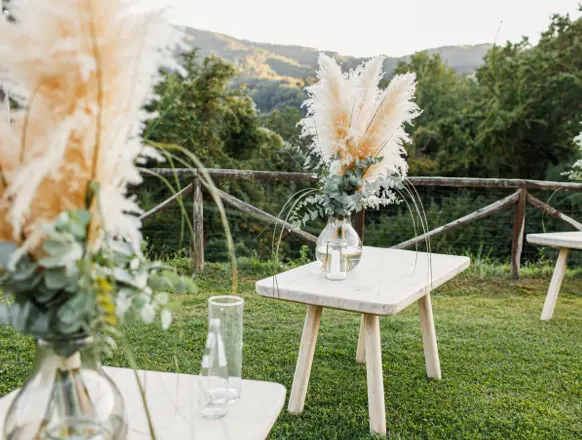Best Foliage for Summer Bouquets: A Guide to Fresh Greens
Summer is the season of abundance, with gardens bursting with vibrant flowers, aromatic herbs, and lush greenery. One often overlooked aspect of floral design is the foliage, which not only complements your flowers but adds texture, fragrance, and color to your arrangements. From herbs with culinary flair to unique plant shapes, foliage is the backbone of any bouquet. In this guide, we’ll explore the best summer foliage from a curated list of plants we grow in the summer for foliage: mint, lemon basil, agastache, celosia, gomphrena, and eucalyptus.
1. Mint: A Fresh, Fragrant Addition
Mint is a versatile herb that brings a refreshing scent to your bouquets. Its vibrant green leaves and cooling fragrance make it a great addition to summer arrangements. Not only does it look good, but it also adds an invigorating aroma.
Why Use Mint?
- Adds freshness and a cooling scent
- Bright green foliage complements most flowers
- Long-lasting in bouquets, as long as it’s kept hydrated
Pair it with: Bold summer blooms like sunflowers or zinnias for a rustic, garden-fresh bouquet.
2. Lemon Basil: Aromatic and Delicate
Lemon basil is not only an herb for your kitchen but a great foliage option for summer bouquets. Its delicate, light green leaves and refreshing citrus scent bring a burst of energy to your arrangement. The slender stems and gentle texture add a soft backdrop for larger, showier flowers.
Why Use Lemon Basil?
- Beautiful lemon scent adds sensory depth to bouquets
- Subtle greenery complements bold or pastel flowers
- Works well in more relaxed, wildflower-style bouquets
Pair it with: Soft florals like roses or pastel zinnias for a romantic, fragrant bouquet.
3. Agastache: An Uncommon but Striking Foliage
Agastache, also known as hummingbird mint or hyssop, is a lesser-known but fantastic choice for summer bouquets. It offers both foliage and flowers, making it a versatile pick. The leaves have a subtle minty scent, and their pointed, lance-shaped structure adds an architectural element to your bouquet. On the farm we have different colors of agastache to choose from.
Why Use Agastache?
- Long-lasting and drought-tolerant, perfect for hot summer days
- Adds both height and structure to your arrangement
- A subtle minty scent without overpowering the rest of the bouquet
Pair it with: White sunflowers and pastel zinnias.
4. Celosia: Bold Texture and Color
Celosia brings a striking texture with its vibrant colors and unique shapes. While it’s often grown for its flower, the foliage can also be used in bouquets, adding a touch of exotic flair. The leaves are usually broad and have a lush, green or burgundy hue, adding depth and contrast to lighter arrangements.
Why Use Celosia?
- Unique texture and color, perfect for bold, artistic arrangements
- Adds volume and interest to bouquets
- Durable in the heat
Pair it with: Traditional colored sunflowers and bright zinnias for a stunning, bold bouquet.
5. Gomphrena: Low-Maintenance Greenery
Gomphrena, often recognized for its small, globe-shaped flowers, also offers attractive foliage for your bouquet. Its soft, slightly fuzzy leaves add texture, while its compact size makes it ideal as a filler. The greenery is low-maintenance, holding up well in the summer heat without wilting quickly.
Why Use Gomphrena?
- Provides subtle texture and visual interest
- Highly durable in hot weather, making it ideal for outdoor bouquets
- Works well as a filler to balance out larger, more showy flowers
Pair it with: Bright, playful flowers like marigolds or cosmos to create a fun, carefree arrangement.
6. Eucalyptus: Classic and Aromatic
Eucalyptus is a timeless favorite in floral arrangements, and for good reason. Its silvery-green leaves and signature scent make it an excellent addition to summer bouquets. The elegant, trailing stems bring a touch of whimsy, while the scent adds a calming, spa-like aroma to your arrangement.
Why Use Eucalyptus?
- Adds height, texture, and movement to any bouquet
- Signature scent provides a calming atmosphere
- Pairs well with almost any flower, thanks to its neutral color
Pair it with: Roses and lisianthus for a luxurious, sophisticated arrangement.
Conclusion:
The foliage in your bouquet is just as important as the flowers themselves. Each type of greenery offers something unique, from the refreshing scent of mint and lemon basil to the structural beauty of agastache and celosia. Whether you’re aiming for a rustic, romantic, or bold look, the right combination of foliage can elevate your arrangement to new heights.
When building your summer bouquet, experiment with these foliage options. Mix and match for contrasting textures and colors, and most importantly, enjoy the creativity that comes with designing your perfect summer arrangement!
Tags
SHARE THIS POST
Related Articles

Conditioning Herbs
The Importance of Conditioning Herbs in Boiling Water to Prevent Wilting in Bouquets

DIY Flowers for Your Dream Wedding
Craft exquisite floral arrangements for your wedding day, infused with love and creativity.

How to Create an Inviting Garden for Pollinators in North Texas
The Importance of Conditioning Herbs in Boiling Water to Prevent Wilting in Bouquets




